How These Bad Habits Could Be Ruining Your Hair
A big part of self-care for most people also includes hair care. No one wants their hair to look bad or unhealthy, which is why most of us have sacred hair care rituals that we stick to. However, what might be the best routine for some could be the worst for others. “Before choosing any hair care regimen, it is essential to analyze your hair type and identify the causes of hair problems,” reveals dermatologist Dr. Harish Koutam.
While we all know the importance of washing and conditioning our hair, there are many habits that can be damaging it without you even realizing it. Luckily, we investigated the most common hair mistakes people make, and some of them are sure to surprise you. Of course, it’s impossible to always do everything right when it comes to keeping your hair healthy, but being aware of the things that can damage it is a step in the right direction!
You’re not cleaning your hairbrush regularly
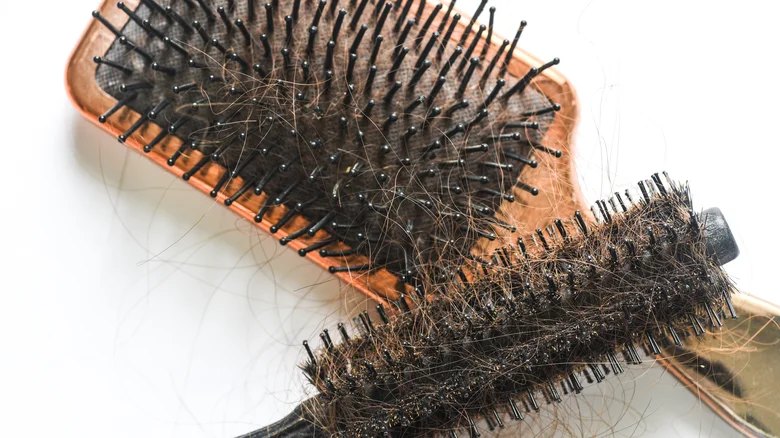
We all know how important it is to clean our towels and makeup brushes, but many of us neglect to regularly clean our hair brushes. In fact, when you’re choosing the right hair brush for you, make sure it’s one you can easily clean. While we’ve all seen hair brushes that get dirty with hair, product buildup, skin, and dust, “additional bacteria and fungus can grow on the material inside the brush,” trichologist William Gaunitz tells The New York Times. Using dirty tools on your hair will spread buildup and bacteria, and your scalp can become inflamed, leading to hair loss.
Now you’re probably wondering how often you should wash your hair brush. While there’s no general figure, if you don’t use too many hair products on a daily basis, you can wash it every two to three weeks. However, make sure to regularly inspect your brush, and if you see buildup, give it a bath. The first thing you should do is remove any hairs (something you should do daily), then soak your brush in water to which you have already added clarifying shampoo. A good tip is to use an old toothbrush to scrub well between the bristles of the brush. Once you have rinsed it, let it dry and spray it with a little disinfectant.
You’re using dry shampoo too often
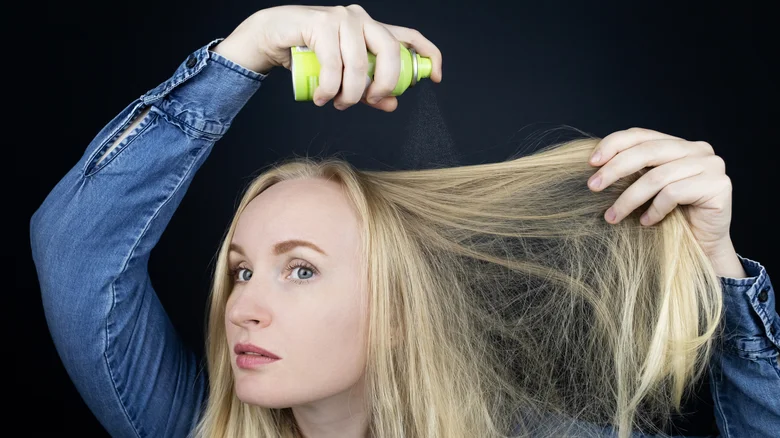
Using dry shampoo is an easy way to give your hair a fresh look, but if you use it regularly and don’t wash it properly, it can weaken your hair. “Dry shampoo buildup can trap unwanted bacteria and create harmful fungi that lead to the development of abnormal scalp conditions, and product buildup slows down cell turnover and nutrient distribution that weakens hair follicles,” trichologist and colorist Bridgette Hill tells Well + Good.
To avoid this, make sure to use a clarifying shampoo every time you use dry shampoo on your hair. Another great way to make sure you’re washing your hair properly is to use a shampoo massager—trust us, it does a much better job of removing buildup than our fingers ever could. While any massager will work,
You wash your hair with hot water
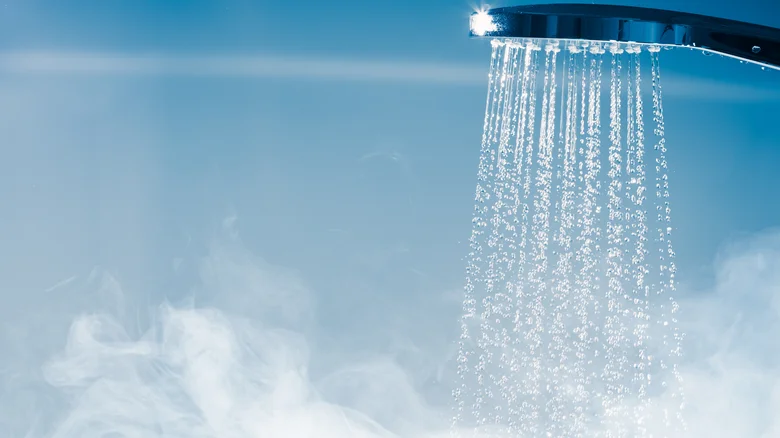
For many people, nothing is as relaxing as a hot shower. However, when washing your hair, using extremely hot water is one of the worst things you can do. “When you use hot water to wash your hair, your hair follicles are exposed to environmental and oxidative damage, which can lead to hair loss. Hair loss is accelerated because damaged roots lose strength. This can also lead to premature graying,” award-winning dermatologist Hasan Benar tells Byrdie.
Health Shots reveals that if you use hot water on your hair regularly, your hair will eventually become dry, you’ll notice increased hair loss, it can lead to inflammation of the scalp, and dandruff can develop. According to Better Not Younger, the perfect water temperature for your hair is around 100 degrees Fahrenheit (about 37 degrees Celsius). If you want your hair to be even healthier, make sure to always do your final rinse with cold water to close off your hair follicles and maintain scalp health.
You are wearing tight ponytails/buns on a daily basis
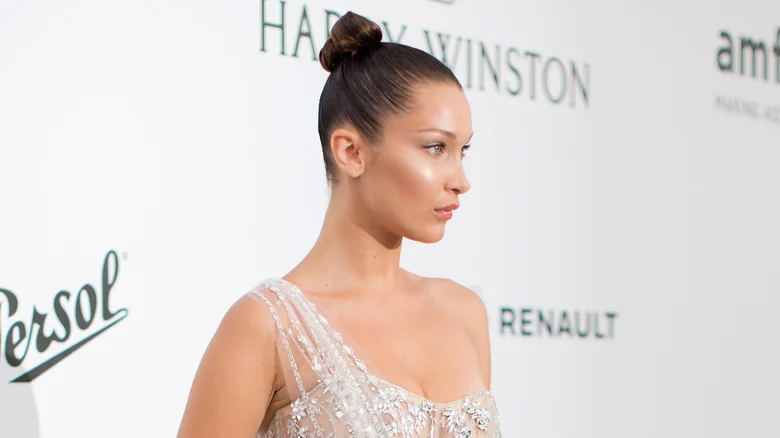
Anyone with long hair knows how nice it is to not have it in their face when they’re at home, sleeping, or just running errands. We often opt for very tight ponytails and buns, which have also become ultra-trendy thanks to the rise of the “clean girl look” frequently seen on models like Hailey Bieber and Bella Hadid. Unfortunately, wearing your hair up on a regular basis is bad for your hair and can lead to excessive hair loss.
“Any hairstyle that is pulled up too tightly can lead to traction alopecia. Not just tight ponytails, but also buns, braids, and hair extensions,” hair growth expert Lars Skjoth tells Mane Addicts. “When hair is pulled up too tightly, it creates tension between the hair and the follicle and can tear the follicle. Repeated tearing can create scarring in the follicle and this damage will prevent hair from growing there.”
If you notice that you have a lot of short hair, you might think you’re just growing baby hairs, but in reality, you may also be suffering from hair breakage due to repeatedly tight hairstyles. Another sign of traction alopecia is hair loss around the hairline. “Some people also experience patchy hair loss in places around the hairline that have been tightened with ponytails, braids, or other hairstyles,” board-certified dermatologist Corey L. Hartman, M.D., tells Allure.
You’re brushing your hair while it’s wet
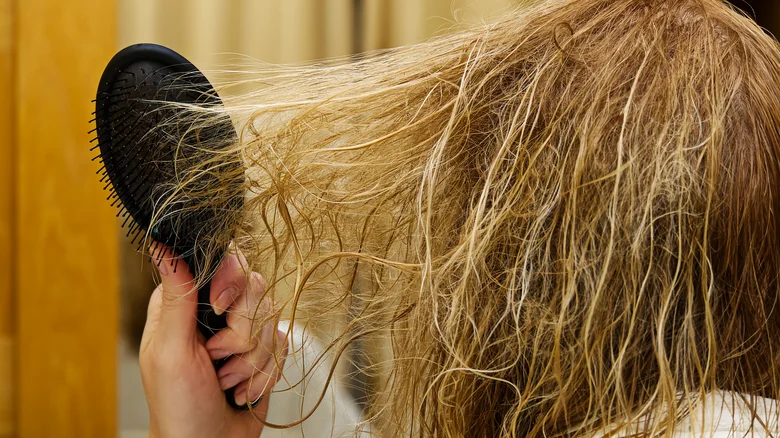
Many people tend to brush and detangle their hair in the shower before or after applying conditioner; however, hair experts recommend against it. “The first thing to keep in mind when brushing your hair is that it’s at its most vulnerable and sensitive state when it’s wet,” certified trichologist and hairstylist Shab Reslan tells Byrdie. “Brushing it in those conditions can overstretch it, overpull it, and ultimately tear it. Hair is at its strongest state when it’s dry.”
That’s why it’s essential to brush your hair before washing it—this way, you won’t encounter any unexpected tangles. Once you wash your hair, you should also wait for it to dry before brushing it. “The best time to brush your hair is when it’s almost or completely dry. But if you have tangles after washing or swimming, you can use a wide-tooth comb on wet hair to tidy it up, but make sure it has smooth teeth so as not to irritate your scalp,” hairstylist Rob Reeves tells VS Sassoon.
You’re not using heat protection when using hot tools

If you use heat tools but not heat protectants, don’t be surprised to find your hair quickly becoming damaged and split ends almost every week. According to The List, heat protectants have silicones that coat the hair cuticle and protect it from high temperatures. “Heat protectants create a barrier between the hair and the heat tool,” celebrity hairstylist Justine Marjan tells HelloGiggles. Regardless of whether you use heat tools daily or once a month, it’s worth adding that extra step of applying a heat protectant.
However, even the best heat protectants can’t protect your hair forever. If you use heat tools regularly, you’ll end up damaging it. “Ultimately, if you’re using excessive heat, you’re going to see damage. Most people will eventually notice damage over time, though it will take much longer and be less likely with the right heat protectant,” Nikki Neubarth, COO and head of product development at UNITE Hair, tells Mane Addicts.
You’re not protecting your hair in the sun

Speaking of heat damage, many people completely forget about protecting their hair from the sun. “If your hair is exposed to the sun for a long time, UVA and UVB rays can damage the outer layer of the hair strand, called the cuticle. It can damage the hair shaft and lead to discoloration, premature graying, dry and brittle strands, broken or split ends, weakening, and frizz,” dermatologist Dr. Ameesha Mahajan tells Vogue.
While protecting your hair from the sun is beneficial year-round, the one season you should really focus on is summer. Just like the rest of your skin, the top of your head can also get sunburned, and aside from being incredibly painful, that can also result in weaker hair. “The best way to protect your hair from the heat is to wear a hat,” celebrity hairstylist Adam Reed, who is also the founder of hair care line Arkive, tells Get the Gloss. “If hats aren’t your thing, wrap your hair in headbands, turbans and headscarves – they’re super easy to make and look absolutely cool. These will protect your hair from direct sunlight, but you should still apply heat protection directly to your hair.”
You’re not getting regular hair trims
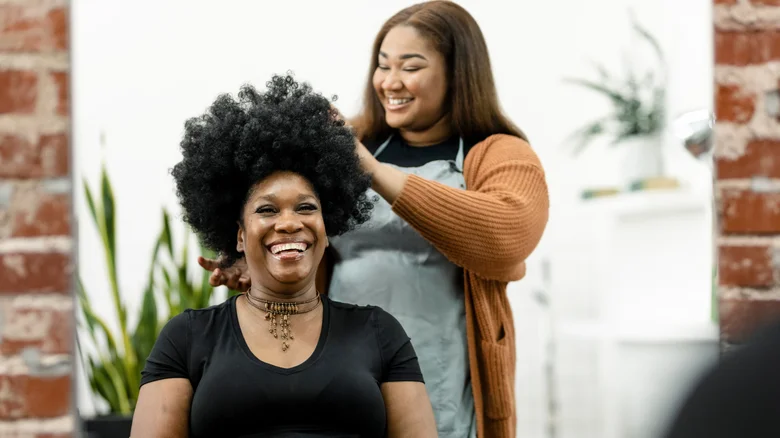
It’s safe to say that everyone has heard this before: To grow long, healthy hair, you need to get regular trims. While it may seem counterintuitive (you are, after all, trying to grow your hair), hair experts agree that it’s true. Once split ends form, your hair will continue to split into two strands toward the root. “The damage will continue to move up the shaft, so when you [finally] go to get a trim, you’ll have to cut more than you would have if you’d rushed into getting your hair cut,” Erika Wasser, founder and CEO of Glam & Go, told Insider.
According to Healthline, if you’re trying to grow your hair, get a trim every 12 weeks. However, schedule an appointment sooner if you notice split ends before then. The health of your hair depends on many factors, so it’s hard to give a haircut timeframe that works for everyone.
You’re rubbing your wet hair with a towel

As we mentioned, hair is more sensitive when it’s wet. Because of this, it needs to be treated gently, otherwise it will break. Rubbing your hair harshly with a towel is a habit you should kick. “This can make split ends worse and cause little craters along the hair shaft, which weakens the hair,” celebrity stylist and author Monae Everett tells HuffPost. “Obvious signs of damage are dry hair and frizz. Frizz is a major indicator of damaged, dry hair that needs hydration.”
However, this doesn’t mean you can’t use a towel — you just need to be more gentle with it. “After a shower, instead of wringing or rubbing, gently squeeze out the water with an absorbent hair towel,” founder of microfiber towel brand Aquis, Britta Cox, tells Byrdie. “Next, wrap your hair and allow the towel to absorb more water for 10 to 15 minutes, depending on your hair type: fine hair will require less time, while thick or curly hair will require more time. This creates the least amount of friction and allows your hair to dry quickly without damaging the cuticles.”
You’re overwashing your hair
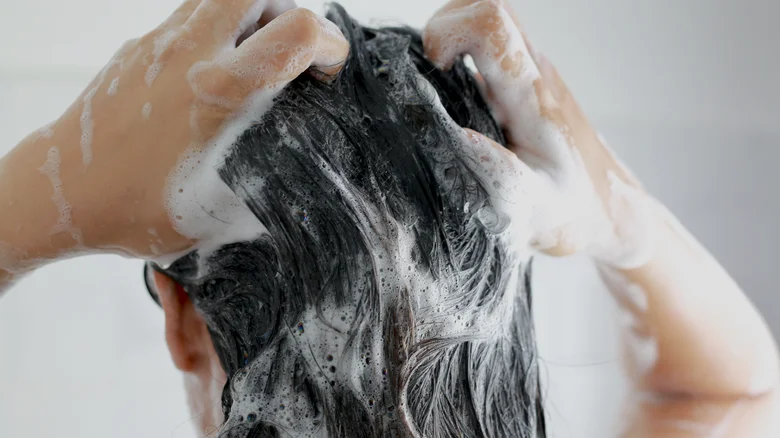
How many times a week you wash your hair depends on your hair type, the products you use, and your needs. However, over-washing your hair causes damage to your hair, so hair experts recommend not washing it unless it’s really necessary. “If you seem to have more split ends than usual, this could also be a sign that you’re over-washing your hair. Wet hair is very susceptible to damage and breakage, so the more you wash it, the more likely it is to break,” celebrity hairstylist Tonya Le told Insider.
While there’s no one-size-fits-all answer on how many times a week you should wash your hair, many experts recommend a maximum of three to four times. “Wash your hair about three to four times a week with the right shampoo and a conditioner or mask specifically for color-treated hair,” Le says. “And, in between washes, refresh your hair with a dry shampoo of your choice.”